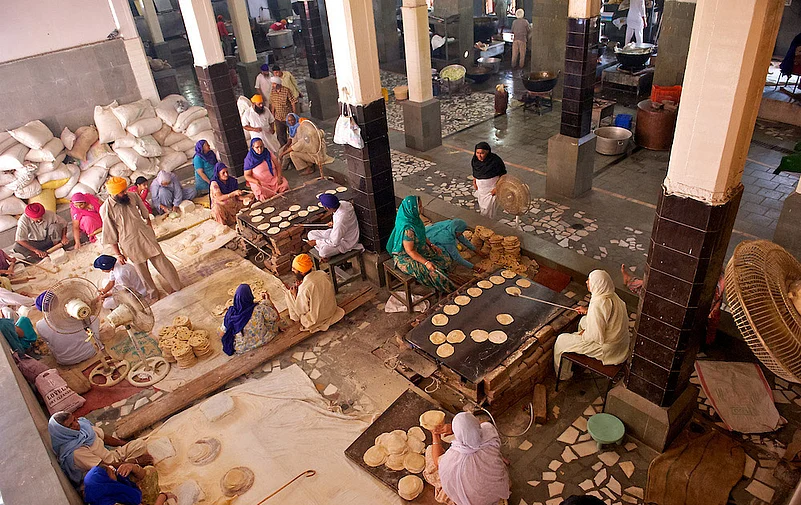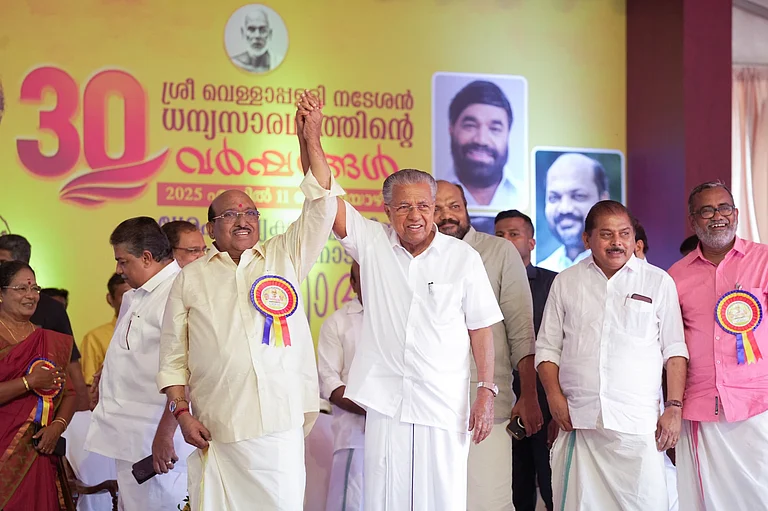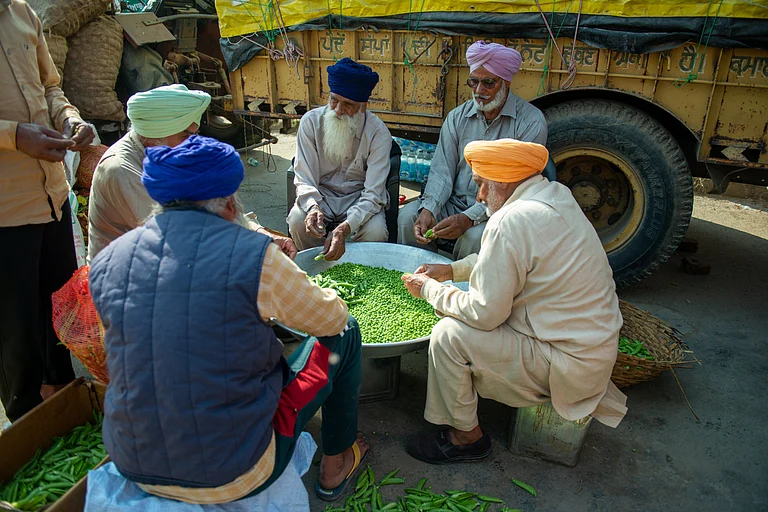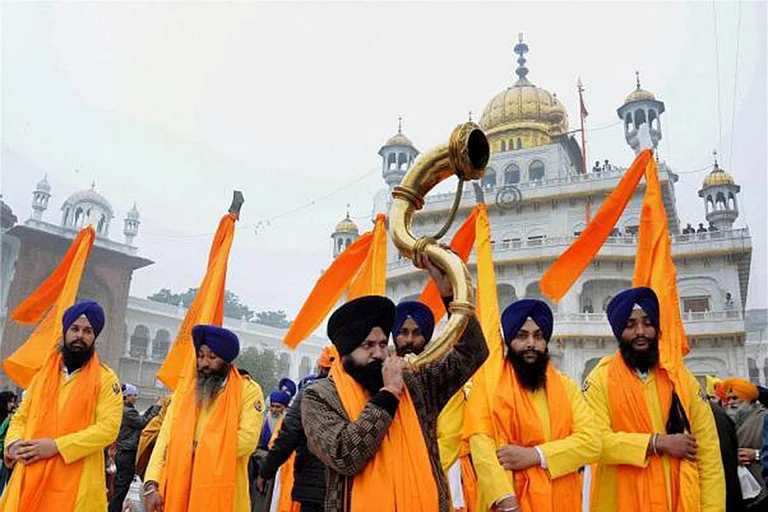What a beautiful concept of serving Langar that Guru Nanak Dev Ji has propagated, which intends selfless service to humanity. Sikh communities make sure to not sleep empty stomachs. Langar is the idea of not letting anyone sleep hungry or that everyone deserves food irrespective of caste, creed, gender, or social status. Langar is a community kitchen or food that is provided to needy people. You have seen Sikh people come forward and provide shelter and food to those who are in need in the Gurudwaras, whether in India or abroad. This tradition has been an integral part of Sikhism since its inception, initiated by Guru Nanak Dev Ji, the founder of Sikhism, in the 15th century.
The Origins of Langar

There is a story of Guru Nanak that once his father gave him some amount of money and told him to do sacha sauda (a good deal like a businessman). Nanak was just 12 years old, and instead of engaging in trade, Nanak used the money to buy food for the saint, who had been hungry for days and stated that this act was the “true business”, according to young Nanak. This incident laid the foundation for the langar tradition and reflected his vision of a world where all are treated equally.
Guru Nanak Ji started this tradition of serving langar in 1481. Nanak, through his teachings, challenged the deeply entrenched caste system and social hierarchies that prevailed in Indian society. Guru Nanak's concept of langar stemmed from his belief that all people are equal in the eyes of God. His teachings emphasized the importance of community, humility, and selfless service (Seva).
Born on April 15, 1469, Nanak believed that everyone is equal and the caste system doesn’t exist. Langar is served daily in Gurudwaras to celebrate humanity and seva. During Guru Nanak Jayanti and Baisakhi, volunteers arrange special langar at Gurudwaras. The teaching of langar was continued by Guru Amar Das ji (the third Guru). In addition, the tradition of langar expresses the ethics of sharing community, comprehensiveness, and oneness of all humankind.
The Role of Langar in Sikhism

Langar is not just a meal; it carries profound spiritual, social, and cultural significance. Langar was an act of social defiance against the caste system. Key elements of Langar include:
Seva: One of the most important and basic teachings of Sikhism is selfless service (Seva) to others. Sikh people set a huge example for every generation to be kind and generous and treat everyone equally. Sevadars are the ones who prepare, cook, and serve langars without expecting any recognition or rewards and play an important role in Gurudwaras. Sikhs put into practice the principle of Sarbat da Bhala—the well-being of all.
Equality: One of the most powerful aspects of langar is that it is open to everyone, irrespective of religion, caste, gender, or wealth. All individuals sit on the floor together to eat, signifying equality. The seating arrangement, called pangat, symbolizes the rejection of social hierarchies. Whether rich or poor, every individual shares the same meal, prepared and served with love and respect.
Community Building: Langar promotes the spirit of community and collective responsibility. By participating in cooking, cleaning, and serving, individuals strengthen their connection to the community and foster relationships built on mutual respect and shared purpose.
Humility: Langar serves as a powerful reminder of humility. Sevadars, regardless of their social standing, perform tasks such as cooking, serving, and cleaning without any sense of superiority. Through these humble acts, Sikhs practice the virtue of nimrata (humility) in daily life.
Food as a Blessing: In Sikhism, food is considered a gift from God, and its preparation is done with utmost respect. Before being served, langar is offered as Prasad, symbolizing the divine blessings of the Guru. This connection between food and spirituality makes the act of eating a sacred experience in itself.
The Practicalities of Langar

The beautiful process of preparing and serving langar in Gurudwaras is highly organized and collaborative. Traditionally, the langar consists of simple vegetarian meals, including dal (lentils), sabzi (vegetables), roti (bread), and kheer (sweet rice pudding). Vegetarian food ensures that people of all dietary preferences can participate.
Preparation: Volunteers prepare the meal with purity and devotion and make sure of cleanliness in the Gurudwara’s kitchen, known as the Langar Hall. Cooking is usually done in large vessels to accommodate the large number of people who come to eat.
Serving: Langar is served in a communal dining area where individuals sit in a row on the floor. This arrangement is intentional and significant in that it ensures everyone, irrespective of status, eats together.
Sangat and Pangat: The terms sangat (congregation) and pangat (sitting together) embody the ethos of langar. The Sangat, or the congregation of people, comes together as equals, sitting in Pangat to share food, thereby fostering a sense of collective identity.
The Langar holds a significant place in the hearts of people, a reflection of the central Sikh belief in equality, humility, and community service. Through this tradition, the Gurus intended to create a space where caste, creed, and social status don’t exist. Where people come together and eat together in the spirit of oneness. Langar in today’s world is a hope of needy people and continues to inspire and uplift, providing nourishment not only to the body but also to the spirit. It is a practice that highlights the profound connection between spirituality and social justice, demonstrating that service to others is service to God.



























